K.C.S.E Biology Q & A - MODEL 2019PP2QN08
Explain the effect of increased physical activity on the following organ systems:
(a) heart (b) lungs (c) kidneys (d) skin.
answers
(a) Heart
-Increased heart beat/ rate/cardiac frequency; increase blood pressure; pumping more blood to the muscles/Peripheral blood vessels; at a faster rates; supplying oxygen; Nutrients; for continued oxidation/respiration; to yield energy needed to sustain the (vigorous) contraction/relaxation of muscles during the physical activity; carbon (iv) oxide /Lactic acid/other Nitrogenous wastes/Metabolic wastes produced during the process are also eliminated/ transported to the relevant excretory organs for elimination; the wastes ,if left to accumulate Can also intoxicate/poison cells/cause muscle cramps/pain/fatigue; (b) Lungs -Panting /increased breathing rates; cause the lungs to expand/increase in volume to take in more air/oxygen; and deflate to expel more carbon (iv) oxide; more oxygen is taken in (during exercise) to sustain the process of muscle respiration/to produce the required energy (for constant muscle contraction and relaxation);
Kidneys also maintain the blood plasma pH; and osmotic balance; by elimination excess hydrogen ions(H+) that accumulate to production of Lactic acid/CO2 during the exercise; To maintain the osmotic balance kidneys conserve sodium ions (Na+); and reabsorb water (in the kidney tubules); Leading to reduction in the volume of urine produced; During exercise the kidney tend to filter out urine releasing more in the urine; (d) Skin - Due to increased muscle activity during physical exercise are sweats(more); Eliminating Nitrogenous wastes/ excess water; through the skin/sweat pores) cooling the body; After (water in) sweat evaporates the increased internal body temperature also leads to dilation of superficial blood vessels (vasodilation)/ blood flowing near the skin; leading to loss of excess heat (to the atmosphere) by radiation/ convection; the hair on the skin surface also lie Flat to allow for loss of heat( to the environment) by radiation/convection;
0 Comments
K.C.S.E Biology Q & A - MODEL 2019PP2QN07
Giving examples, describe the following interactions among organisms:
(a) predator-prey (b) symbiosis (c) parasitism.
answers
.(a) Predator-Prey
K.C.S.E Biology Q & A - MODEL 2019PP2QN06
The table below shows the rate of product formation for two enzymes, H and J over a range of pH values
(a) On the same axis, plot graphs of the rate of product formation against pH.
GRAPH PAPER (b) Account for the rate of product formation for enzyme H between: (i) pH 1.0 and 3.0 (ii) pH 3.0 and 7.0. (c) From the graph, determine: . (i) the pH value at which the rate of product formation of the two enzymes was the same (ii) the value of the rate of product formation for enzymes H and J at the pH value stated in (c)(i) above (iii) the optimum pH value for enzyme J (d) State one variable that may lead to the change in the optimum rate of product-formation of the two enzymes. (e) Suggest with a reason, the likely part of the human alimentary canal where enzyme H would be found.
answers
(b) (i) Rate of product formation increases with the increase in pH to the optimum then decreases;
pH 5 is the optimum pH value for activity of enzyme H; between pH 1 and 2 enzyme H/enzyme molecules are activated; Between pH 2 and 3 enzyme H (enzyme molecules) are denatured/destroyed; (. Enzyme is inactivated/ less active for denatured (ii) Rate of product formation (sharply) decreases with increase in pH; Enzyme H is (not formed by increase in pH hence is denatured); No product forms above pH 4.0 to 7.0; because all enzymes (enzyme molecules) are denatured; (c) (i) 4.0 (ii) 15.0 mg/hr (iii) 7.0 (d) -Temperature -Substrate concentration; -Enzyme concentration; -Cofactors -Co-enzymes -(Enzyme) inhibitors (e) Stomach; Acidic medium/Low pH
K.C.S.E Biology Q & A - MODEL 2018PP2QN08
Describe what happens to a meal rich in proteins along the alimentary canal from ingestion to egestion.
answers
The meal is ingested through the mouth; (In the mouth), it is chewed/masticated (by teeth); to reduce/break it into smaller particles; mixed with saliva (from salivary gland);
The food is then rolled (by the tongue) into boluses; and pushed down into the oesophaghus/swallowed; The boluses move by peristalsis (into the stomach); Constant contractions/relaxations of the stomach walls mix the food, (giving rise to chime); Presence of food in the stomach further stimulates production of gastric juice; which contains pepsinogen; and rennin/chymosin; Pepsinogen is activated to pepsin; by hydrochloric acid; (contained in the gastric juice). Pepsin breaks down proteins to peptides; Rennin converts/coagulates the protein, caseinogen; in milk to casein; (which is abundant in young children). It is then pushed into the duodenum (through the pyloric sphincter); Pancreatic juice in the duodenum contains trypsin; which digests proteins into peptides; (secreted in an inactive form, trypsinogen) In the ileum, intestinal juice/Succus enfericus is secreted; It contains peptidase enzymes; which breaks down polypeptides into amino acids; It also contains polypeptidase enzyme; which breaks down peptides to amino acids,completing the process of digestion of the proteins; The amino acids are absorbed into the bloodstream/pass through the epithelia of the villi, and the capillary walls into the blood-stream; by active transport; The undigested/indigestible proteins/food substances pass through to the colon/large intestines; where water is absorbed; leaving a semi-solid waste material being passed on to the rectum; then out through the anus (as faeces);
K.C.S.E Biology Q & A - MODEL 2018PP2QN07
Describe the role of hormones in the human menstrual cycle.
answers
After/at the onset of menstruation, (the anterior lobe of) the pituitary gland; secretes follicle stimulating hormone (FSH); the FSH causes the Graafian follicle; to develop into the ovary; and stimulate the ovary tissues to secrete oestrogen hormone; Oestrogen brings about repair/healing of the endometrium/uterine wall; its concentration increases to a level which stimulates the (anterior) pituitary gland; to secrete lutenizing hormone (L.H.) and stops further secretion of FSH;
The L.H. stimulates the maturation of the Graafian follicle; LH also stimulates the Graafian follicle to release an ovum into the (funnel of the) fallopian tube/causes ovulation; it also stimulates the remains of the Graafian follicle to form a yellow body/corpus luteum (in the ovary; The corpus luteum is stimulated by the L.H. to produce progesterone; Progesterone then stimulates the thickening of the endometrium/inner lining of the uterine wall; in readiness for implantation; as progesterone level increases, it inhibits (the pituitary gland) from secreting FSH; further increase in progesterone level inhibits the pituitary gland from secreting L.H. This causes the corpus Luteum to degenerate; this reduces the amount of progesterone; the sudden drop in secretion of progesterone causes the endometrium to slough off/menstruation occurs; and the cycle is repeated; K.C.S.E Biology Q & A - MODEL 2018PP2QN06
The effect of auxin concentration on growth response of two parts of a plant, X and Y was investigated over a period of time. The results were tabulated as shown in the table below.
(a) On the same axis, draw line graphs of the effect on growth of the two parts, X and Y (percentage inhibition or stimulation) against the concentration
(b) With reasons, name the two parts of the plant, X and Y. X Reason Y Reason (c) From the graph identify: . (i) the point at which the percentage stimulation was the same for both X and Y. (ii) the optimum concentration of auxins required for part Y (d) State three ways in which the effects of auxins on plants is applied in flower farming. (e) Distinguish between simple and conditioned reflex action
answers
b) X—root;
Reason Low auxin concentration stimulates (rapid/faster) cell division and elongation/growth in roots; High concentration of auxins inhibits growth in roots; Y—shoot; Reason Low auxin concentration has little effect on the growth of shoots/shoots are stimulated to grow with high auxin concentration (up to a given optimum); c) i. 33%±2; ii. 1.0 parts per million; (d)Faster maturity of flowers/earlier flower formation/flowering; Prunning/decapitating shoot tips to allow sprouting of lateral buds, hence more yield; Keeping flowers fresh; Stimulate formation/development of (adventitious) roots;
K.C.S.E Biology Q & A - MODEL 2017PP2QN08
Describe how the mammalian eye is structurally adapted to its function.
answers
K.C.S.E Biology Q & A - MODEL 2017PP2QN07
Explain the importance of protecting the forest ecosystem with reference to the following:
(a) climate change (b) biodiversity (c) biotechnology (d) water conservation (e) pollution.
answers
a) Climate change
K.C.S.E Biology Q & A - MODEL 2017PP2QN06
In an investigation, two potted plants G and H belonging to the same species were exposed to increasing light intensities at different temperatures, 30°C and 20°C respectively. The rate of photosynthesis was measured for each plant and results recorded as shown in the table below:
(a) On the same axis, plot graphs of rate of photosynthesis against light intensity for plants G and H.
(b) State the aim of the investigation. (c) Account for the difference in the rate of photosynthesis in the two plants. (d) Account for the difference in the rate of photosynthesis in the two plants between the following light intensities: (i) 1—4 units (ii) 4—8 units. (e) (i) Predict the rate of photosynthesis at light intensity of 16 units. (ii) Give a reason for your answer in (e) (i) above. (f) State one internal and one external factor that could be limiting in the investigation.
answers
b) To investigate/compare the effect of (varying) light intensity/temperature on the rate of photosynthesis;
c) Rate of photosynthesis is higher in plant G (than H); (Photosynthesis being an enzymatic process), enzymes were subjected to favourable/optimal temperatures (of 30°C): hence more activated, unlike in plant H where temperatures were lower (20C); d) (i) 1-4 units Rapid increase in rate of photosynthesis increases with the increase in light intensity; due to increase in light energy for photosynthesis/formation of more ATP molecules; (ii) 4 — 8 units Slower/gradual increase in the rate of photosynthesis as the light intensity increases: because other factors become limiting/some chlorophyll molecules start bleaching; e) i) Slight increase/no significant increase/remains constant; ii) The optimum light intensity has been exceeded/some chlorophyll could be destroyed; f) Internal factor — Chlorophyll/enzyme concentration; External factor — Carbon (IV) oxide concentration/amount of water;
K.C.S.E Biology Q & A - MODEL 2016PP2QN08
Describe how the mammalian heart is structurally adapted to its function.
answers
K.C.S.E Biology Q & A - MODEL 2016PP2QN07
Using a relevant example in each case, describe simple and conditional reflex actions.
answers
Simple reflex action eg. withdrawal of finger from a sharp object/ hot object; its an automatic response to a specific stimulus; when the finger touches sharp object/ hot object, the pain receptors/ thermoreceptors in the skin are stimulants; and trigger off a nerve impulse; the nerve impulse is transmitted via the senses neurone; to the grey matter of the spinal cord/ CNS/ brain; the impulse is then transmitted via synapse; to the relay neurone; and then through another synapse; to the motor neurone; and then through another synapse; to the motor neurone; the impulse is then transmitted to the effector muscles in the hand; ace - efferent neurone for motor neurone Afferent neurone for sense neurone intermediate/ associative/ connector/interauncial neurone - for relay. The effector muscles/ biceps contract; and the finger is withdrawn from the hot object/ sharp object;
Conditioned reflex action - salivation in a dog/ human being (ace. any other relevant example) student in response to sound; it is an automatic response evoked from an animal by unrelated stimulus; substituted for the one which normally elicits the response; it develops from a past experience; and involves modification of behaviour/involves learning; it weakens with time; and must be reinforced by repeating the related stimulus; the dog/ student salivates when the bell (for meals) rings; because they have learnt to associate the ringing of the bell at meal time with food; everytime it rings (accept use of other relevant examples) they are offered food. K.C.S.E Biology Q & A - MODEL 2016PP2QN06
An experiment was carried out to investigate the effect of temperature on the rate of reaction catalysed by an enzyme. The results are shown in the table below.
(a) On the grid provided plot the rate of reaction against temperature.
(b) When was the rate of reaction 2.6 mg of product per unit time? (c) Account for the shape of the graph between: (i) 5°C and 40°C (ii) 45°C and 60°C (d) Other than temperature name two ways in which the rate of reaction between 5°C and 40°C could be increased. (e)(i) Name one digestive enzyme in the human body which works best in acidic condition. (ii) how is the acidic condition for the enzyme named in (e) (I) above attained’? (f) The acidic condition in (e) (iii) above is later neutralized. (i) Where does the neutralization take place? (ii) Name the substance responsible for the neutralization.
answers
(b) 330C and 51.5 (± 0.50C)
32.5 - 33.5 and 51.0 – 52.0 (c) (i) 5°C and 40° C As temperature is increased rate of reaction is increased/ more products are formed (per unit time) because enzymes become more active (ii) 45° C and 60° C As temperature increase rate of reaction decreases less/products are formed (unit per time) because enzymes become denatured by high temperatures above 40, hence cannot act on substrate. (d) Increase in enzyme and substance concentration Use of co-factors and co-enzymes (e) (i) Pepsin, Chymosin Renin (ii) Wall of stomach/ gastric gland/ oxyntic/ pariental/ cell produced Hydrochloric (f) (i) Duodenum (ii) Bile juice/ e.g. NaHCO3
K.C.S.E Biology Q & A - MODEL 2015PP2QN08
How is a mammalian heart structurally adapted to its function?
ANSWERS
K.C.S.E Biology Q & A - MODEL 2015PP2QN07
Explain the various ways in which seeds and fruits are adapted to dispersal.
ANSWERS
Wind - dispersed seeds / fruits are light / small to be carried by air currents;
Some seeds / fruits have developed hairy structure feather-like projections; wing like structure which increase their surface area to be blown about /carried away by wind; open capsules; borne on long stalks, which are swayed by wind scattering seeds. Water - dispersed fruits / seeds are also light; to float on water; Some, (like coconuts) have fibrous /spongy mesocarps to trap air; making them buoyant/floating on water; Others (like the water lily) produce seeds whose seed coats trap air bubbles; making them float on water; Some have water-proof seed testa / pericarp; remain afloat without soaking /sinking immediately they are released from parent plants; Animal - dispersed fruits have developed hooks; to stick on (the fur of passing) animals; In some cases, fruits are succulent, brightly coloured / scented; to attract animals, birds; The seed coats (of some seeds) are hard; and resistant to the digestive enzymes; hence passing out through the gut undigested; Self dispersal by explosive mechanism; Fruits have sutures/lines of weakness; which split open when drying scattering seeds. K.C.S.E Biology Q & A - MODEL 2015PP2QN06
The graph below shows the relative numbers of three main species of organisms in a pond.
(a) Giving a reason for your answer, which of the species is a
(i) producer? Reason (ii) secondary consumer? Reason (b) State the depths at which each of the populations labelled L, M and N is at its optimum. L M N (c) (i) Which method may have been used to determine the population of organisms labelled N in the pond? (ii) Give a reason for your answer in (c) (j) above. (iii) State the assumptions made when using the method in (c) (i) above. (d) State two reasons why primary productivity in the pond decreases with depth. (e) Explain the ecological importance of fungi to plants. (f) Why is flooding likely to lead to a cholera outbreak?
ANSWERS
(a) (i) Producer - M
Reason Largest in number hence source of food for the other species Abundant on the water surface to trap light for photosynthesis; (ii) Secondary consumer - N Reason - Smaller in number than L and M (b) L -1.125m; M- 0.75m; N- 2.00m; (c) (i) Capture - Recapture (method) /Capture - mark - release - recapture; (ii) Animals are highly mobile; (iii) No migration during the period of survey/study; No deaths/variation/reproductiori in population during the period; Method of marking does not affect the animal behaviour; Marked/released animals will freely mix with others in the pond; Released/marked animals will have enough time to mix with the others; There is uniform/random distribution of animals within the period. (d) Decrease in light intensity as depth increases; Decrease in temperature as depth increases; (e) Breakdown of organic materials/decompose/rot/decay of materials; to release plant nutrients; (f) Flood water may mix with human waste contaminated with cholera bacteria; The flood water may then contaminate food / water sources; The contaminated water/food causes cholera infection when ingested;
K.C.S.E Biology Q & A - MODEL 2014PP2QN08
Describe the role of the human skin in homeostasis.
answers
When body temperature is lowered below normal; arterioles in the skin constrict; blood is diverted to a shunt system; less blood flows to the skin/less heat is lost; when body temperature is raised above normal;arterioles in the skin dilate;more blood flows to the skin; more heat is lost by convection and radiation;when body temperature is lowered below normal:erector-pilli muscle s contract, hair stands erect; more air is trapped, air is a bad conductor;and insulates the body against heat loss; when body temperature is raised above normal: erectorpi11i muscles relax, hair lies on skin;less air is trapped, more heat is lost; when body temperature is lowered below normal: less fluids are absorbed by sweat glands;less sweating, less vaporisation of water;
when body temperature is raised above normal:sweat glands are more stimulated and more sweat is produced; water in sweat evaporates and takes up heat from the body;body is cooled/body temperature is lowered;
K.C.S.E Biology Q & A - MODEL 2014PP2QN08
How does excretion take place in plants?
answers
K.C.S.E Biology Q & A - MODEL 2014PP2QN07
Describe the process of carbohydrate digestion in human beings.
answers
In the mouth;
K.C.S.E Biology Q & A - MODEL 2014PP2QN07
Explain how each of the following factors affects the rate of photosynthesis:
(i) temperature; (ii) chlorophyll concentration.
answers
(i) Reactions in photosynthesis are catalysed by enzymes; at optimum temperature photosynthesis proceeds faster;
Below optimum temperature the rate of photosynthesis decreases because enzymes are inactivated by the low temperatures / above optimum the rate of photosynthesis decreases because enzymes are denatured; (ii) Chlorophyll traps energy from sunlight for photosynthesis; The higher the chlorophyll concentration the higher the rate of photosynthesis and vice versa; K.C.S.E Biology Q & A - MODEL 2014PP2QN06
An experiment was done to determine the uptake of nitrogen from the soil by broad bean seedlings. The experiment was done with one set of seedlings M grown in the atmosphere enriched with carbon (IV) oxide and another set up of seedlings N grown in the normal atmosphere.
The amount of nitrogen in each seedling was measured in milligrams at intervals often days. The table below shows the results obtained.
(a) Using the same axis draw line graphs of nitrogen uptake by the two (M and N) sets of broad bean seedlings against time.
(b) Determine the rate of uptake of nitrogen in Set M between 65 and 85 days. (c) (i) What is the relationship between carbon (IV) oxide concentration in the air and nitrogen uptake? (ii) Account for the relationship in (c)(i) above. (d) (i) What would happen to the concentration of nitrogen in the seedlings in set M, if after 75 days the seedlings are transferred to a normal atmosphere. (ii) Explain your answer in (d)(i) above. (e) State three ways in which nitrogen fixation occurs.
answers
(c) (i) The higher the carbon UV) oxide content in air, the higher the nitrogen uptake and vice versa;
(ii) More Carbon (IV) oxide in the air makes the seedlings to photosynthesize more; hence more amino acids/protein; are formed in the dark stage; formation of amino acids/protein requires nitrogen; (d) (i) The concentration of nitrogen would remain constant; (ii) Despite decline in CO,; the nitrogen already absorbed/taken up by the plant will still remain: (iii) Lightning; By free-living bacteria/micro organisms; By Rhizobium (in root nodules of legumes); K.C.S.E Biology Q & A - MODEL 2013PP2QN08
Describe the role of the following organs in excretion and homeostasis.
(a) the liver (b) the skin during hot environmental conditions.
ANSWERS
(a) Regulation of blood sugar ; when blood sugar is below normal/90 mg/100 cm3 glucagon ; triggers the conversion of glycogen to glucose in the liver ; the glucose is released into the blood stream. When blood sugar is in excess above normal/10 mg/100cm3, insulin; causes the liver to convert glucose excess to glycogen ; which is stored.
Production of heat energy ; by increasing the rate of metabolic activities: Excretion of bile pigments ; produced due to breakdown of worn out red blood cells: Deamination/removal of amino group of excess amino acids to form urea: and detoxication/poisonous/toxic substances: (b) Sweat glands excrete urea; excess water; and salts: hence maintaining salt & water balance in the blood. Evaporation of sweat; cools the body due to loss of latent heat of vaporization; when the body temperature rises : blood vessels in the skin vasolidate: allowing more blood to flow near the skin surface: thus heat is lost to the environment radiation/convection. The eretor pili mucle relaxes hair flattens ; in a hot environment reducing insulation: hence heat is lost from the body by radiation! convection; to the environment.
K.C.S.E Biology Q & A - MODEL 2013PP2QN07
How are respiratory surfaces in mammals adapted to their functions?
ANSWERS
Many to provide a large surface area: across which large amounts of gases diffuse: moist surfaces: to dissolve respiratory gases: so as to diffuse. Made of a thin membrane/epithelium/one cell thick wall ; to reduce diffusion distance;
Highly vascularized: to carry away oxygen; and bring in carbon (IV) oxide: creating a steep diffusion gradients.
K.C.S.E Biology Q & A - MODEL 2013PP2QN07
Describe the process of blood clotting in human beings.
ANSWERS
When a blood vessel is cut/injured platelets/thrombocytes/damaged tissue/wound is exposed to the air: they release thrombokinase/thromboplastin ; an enzyme that activates the conversion of prothrombin: to thrombin: in the presence of calcium ions: vitamin K/ phylloquinone ; is needed for the formation of prothrombin; Thrombin converts (soluble blood protein) fibrinogen ; into (the fibrous form) fibrin; which forms a mesh / network across the wound: The clot so formed prevents excessive bleeding: and entry of disease agents/pathogens/micro-organisms/microbes;
K.C.S.E Biology Q & A - MODEL 2013PP2QN06
A scientist carried out an investigation to find out the population growth of mice under laboratory conditions. Twenty young mice were placed in a cage. The results obtained from the investigation were as shown in the table below.
(a) On the grid provided, draw a graph of the number of mice against time.
GRAPH PAPER (b) Account for the changes in mice population between (i) O to 2 months (ii) 2 to 6 months (iii) 6 to 10 months (iv) 10 to 12 months. (c) (i) Between which two months was the population change greatest? (ii) Calculate the rate of population change over the period in (c)(i) above. (d) What change in population would be expected if the investigation was continued to the 19th month? (e) To obtain the observed results state two variables that were kept constant during the investigation.
answers
(b) (i) No change in population/population is constant: mice still maturing/have not given birth:
(ii) Slow/gradual population growth; few mice have reached sexual maturity; (iii) Faster/rapid rate of population growth/exponential; Many mice sexually matured/reproducing/enough food/space/no competition birth rate higher than death/no diseases: (iv) Population decline; Competition is high / food is limiting / space is limiting/accumulation of toxic waste/disease (outbreak) deathrate higher than birth rate. (c) (i) 6 and 8; (ii) 310-115 = 195 mice per month; (d) Population would increase; (e) Food; space ; cage size; water; Describe how environmental factors increase the rate of transpiration in terrestrial plants.26/6/2020
K.C.S.E Biology Q & A - MODEL 2012PP2QN08
Describe how environmental factors increase the rate of transpiration in terrestrial plants.
ANSWERS
In bright light; stomata are fully/wide open; increasing contact between the atmosphere and air spaces in the leaf; This in turn increases water loss by evaporation through the
open stomata High environmental temperatures; increase the rate of evaporation from the leaf surface thus more water leaves cells due to the increased diffusion gradient; Iii a windy day; air around the leaf is carried away reducing water vapour around the leaf; more water moves into the atmosphere from the leaf air spaces; In low humidity/when the atmosphere is less saturated with water vapour; more water will move from leaf air spaces into the atmosphere; leading to increased rate of transpiration; . Low atmosphere pressure; increases diffusion gradient between atmospheric and leaf increased rate of evaporation;Availability of water; causes turgidity of guard cells hence stomata open; increasing rate of transpiration. |
Archives
December 2024
Categories
All
TOPICSFORM 1
Form 2
Form 3
Form 4
|
Can't find what you are looking for? Don't worry, Use the Search Box Below.
|
Primary Resources
College Resources
|
Secondary Resources
|
Contact Us
Manyam Franchise
P.O Box 1189 - 40200 Kisii Tel: 0728 450 424 Tel: 0738 619 279 E-mail - sales@manyamfranchise.com |


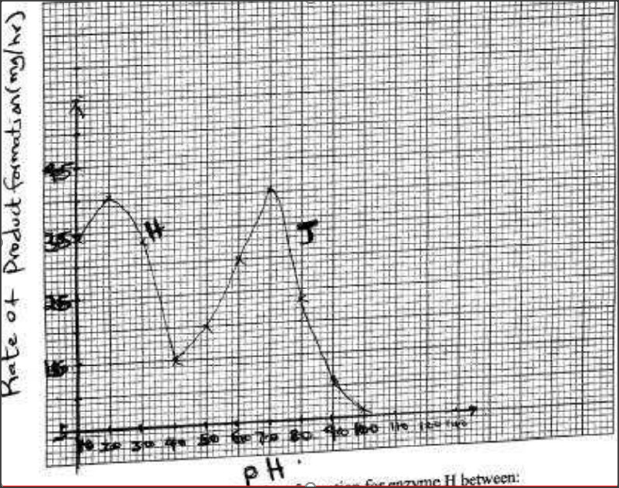

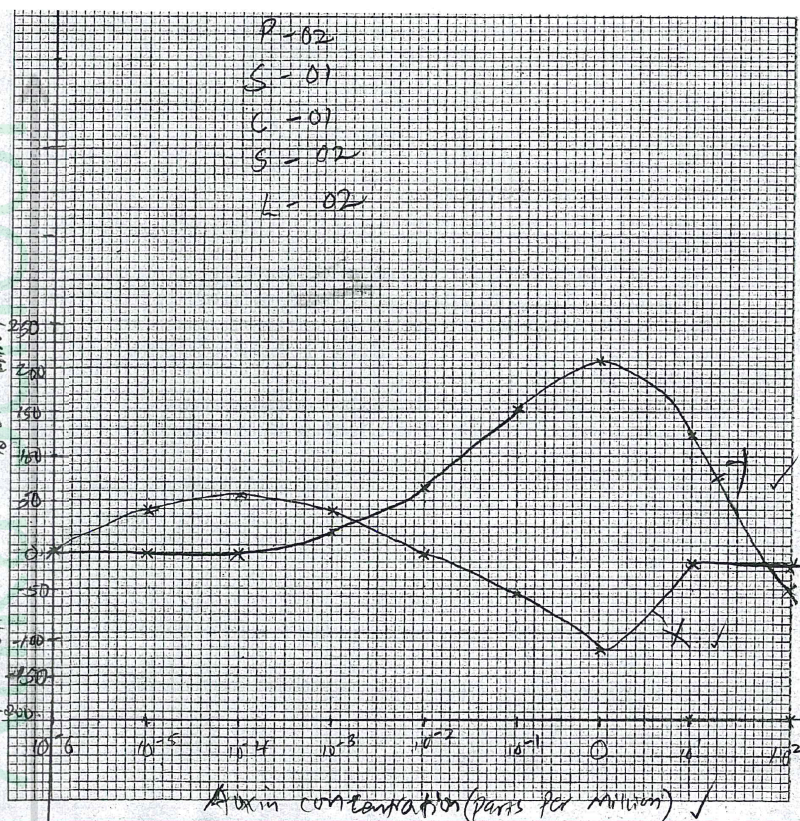

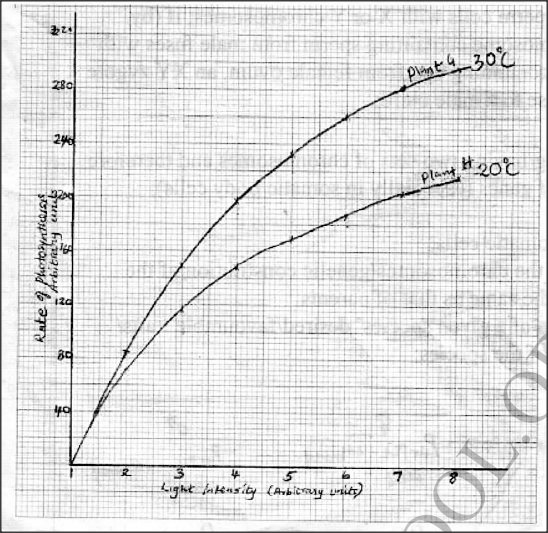
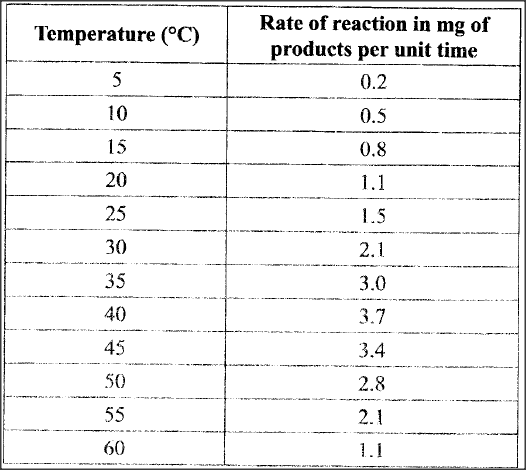
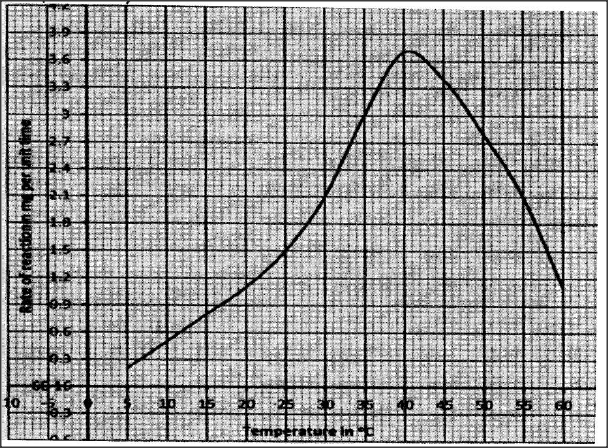
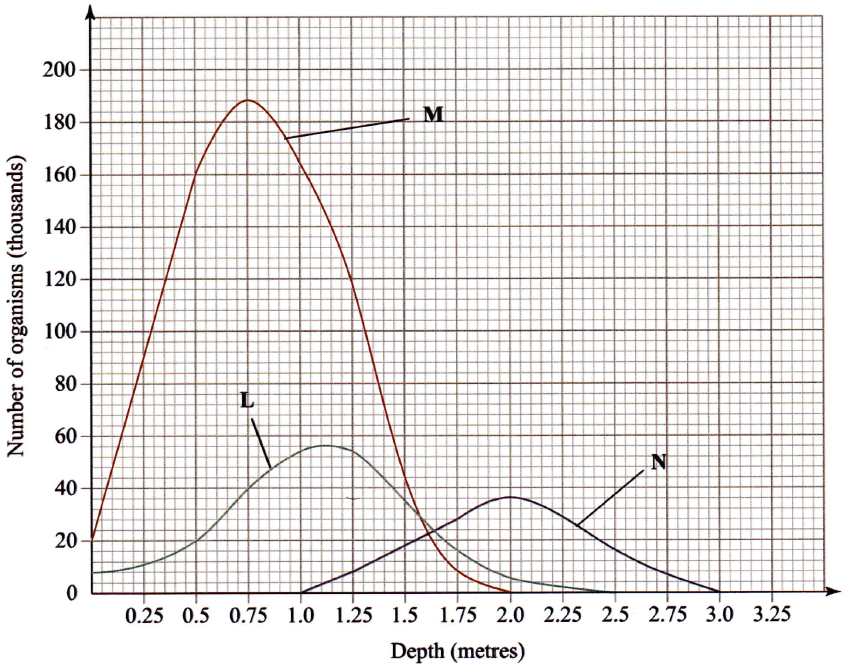

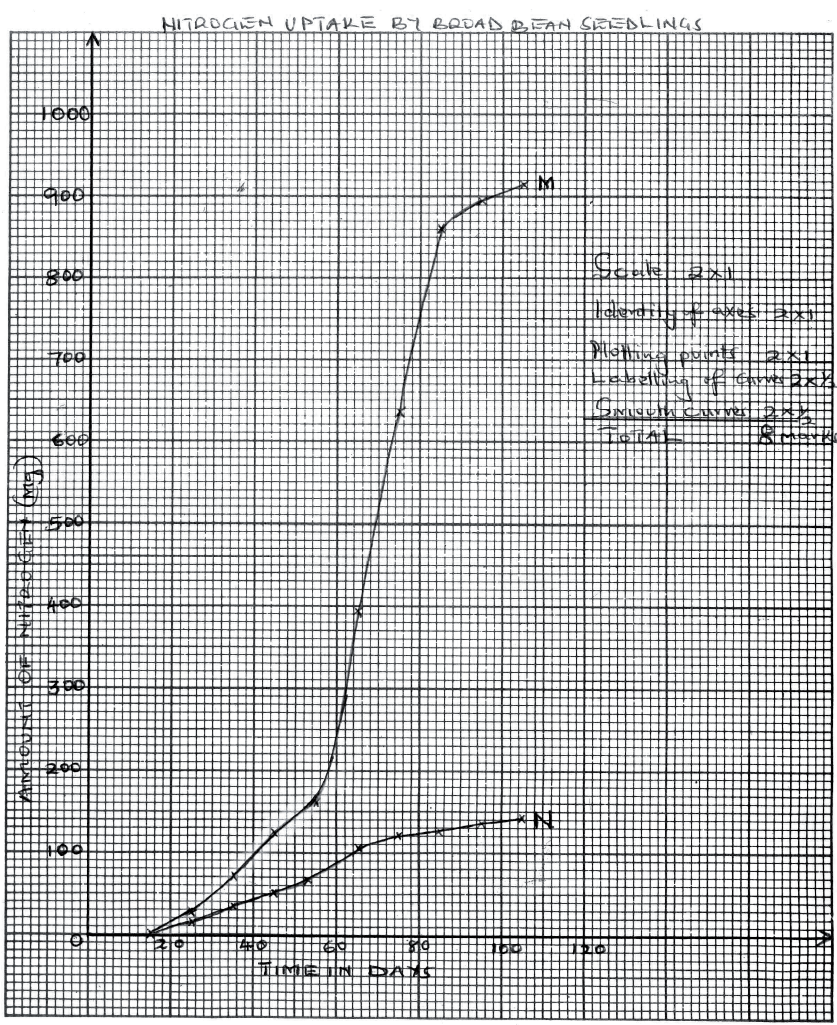


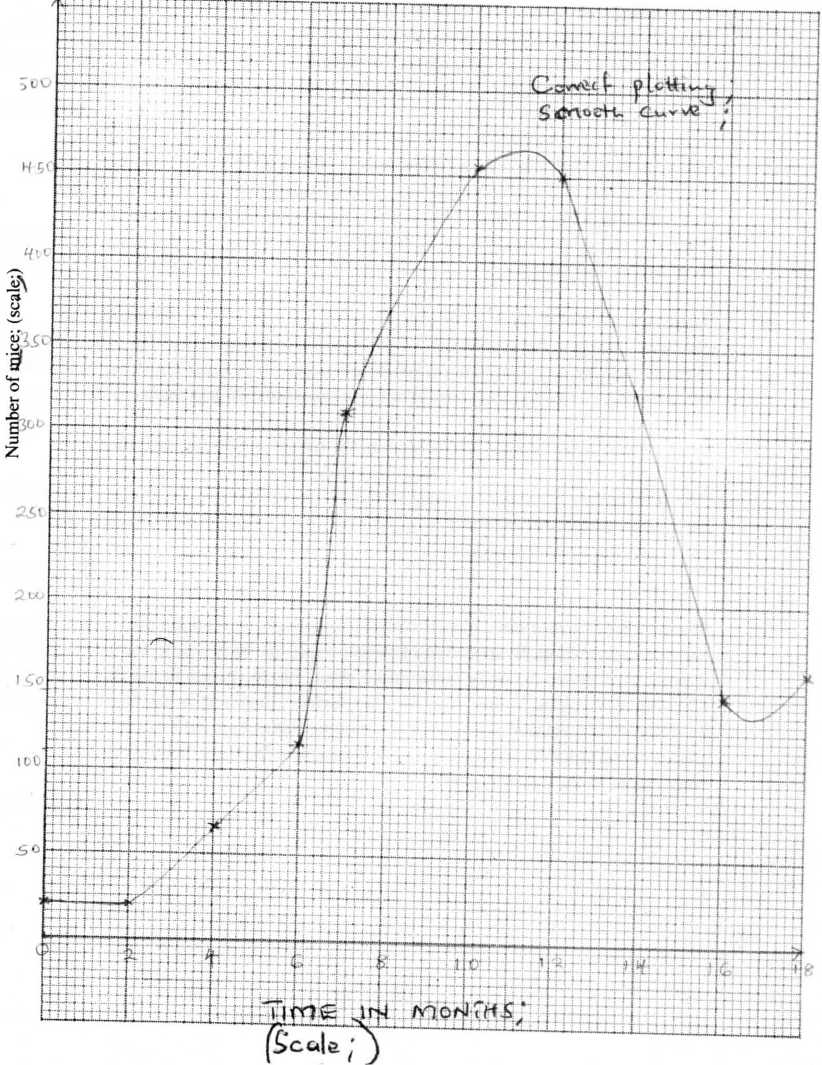







 RSS Feed
RSS Feed

